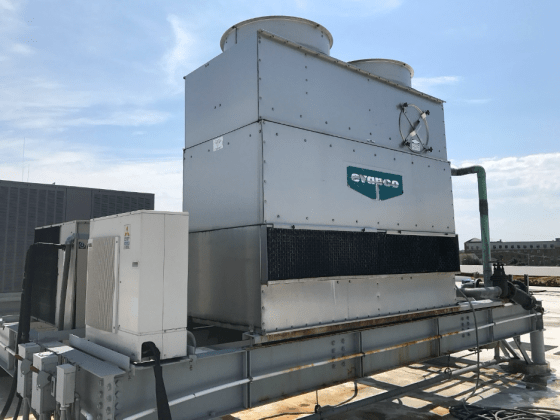
Walden Engineer, Lou Goldstein, gets published by Civil and Structural Engineer Media!
Throughout the United States and beyond, improper HVAC system maintenance may pose a health risk not only to immediate workers, but the surrounding community as a whole.
Legionella bacteria (Legionella) were first discovered by public health officials in 1976, with their name stemming from a pneumonia-like outbreak following a large gathering of American Legion members in the city of Philadelphia. The illness caused by Legionella bacteria was officially named Legionnaires’ Disease. This discovery led health officials to make the connection that Pontiac Fever, which had been the subject of a mysterious illness less than ten years prior in Michigan, was also caused by Legionella.
What legislation protects the public from Legionella risks?
The 2015 New York City outbreak prompted New York State to develop legislation requiring action to prevent Legionella risks. Prior to this point, the only provision for general worker protection was set forth by Section 5(a)(1) of the Occupational Safety and Health Act of 1970 (OSHA), which mandates that employers provide their workers an “employment and a place of employment which are free from recognized hazards that are causing or are likely to cause death or serious physical harm.” However, the lack of a specific reference to Legionella and its related diseases in OSHA made it difficult to enforce compliance with the issue. In addition, despite historic Legionella outbreaks dating back over 40 years, no federal or state laws directly addressed Legionella risks. As a result, Legionella protection measures were a low priority for lawmakers and consequently many facility managers, as well.
The Centers for Disease Control and Prevention (CDC) and similar organizations currently have guidelines directly and indirectly related to Legionella prevention, but there are no additional further regulations on the federal level or in the other 49 states.
How did the 2016 Protection Against Legionella Regulations immediately affect building owners and property managers within New York State?
The New York State regulations came with a collection of preventative and monitoring-based requirements for building owners whose facility contains one or more on-site cooling towers, evaporative condensers, or other wet cooling devices. The following items were immediately required:
- Registration of all wet cooling devices that are being actively operated, including equipment/system specifications
– Active updates to the NYSDOH registry with testing results, startup/shutdown date, etc. - Preparation of a Maintenance Program and Plan which describes all building water systems as they relate to the wet cooling devices, and how disinfection is being performed. This required Plan is not submitted to the NYSDOH, but must be kept on-site at all times.
- Requirement for devices to be cleaned yearly using an approved biocide prior to seasonal operation
- Bacterial culture sampling of each device’s water basin for Legionella, paired with an inspection
- Notification of the local health department in case of elevated Legionella concentrations
– Depending on the severity of the bacteria concentration, an increase in biocide dose and/or an emergency cleaning may be required
What type of disinfectants are effective and commonly used to destroy Legionella?
Click here to read more about the connection between cooling towers and Legionella transmission. Contact Walden Environmental Engineering for more information!
